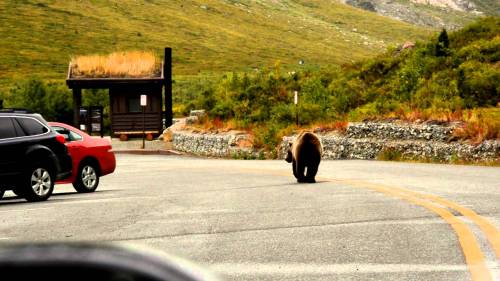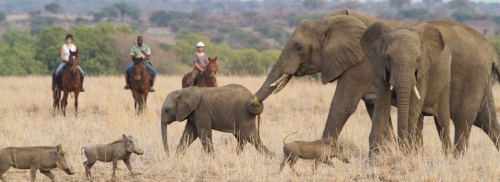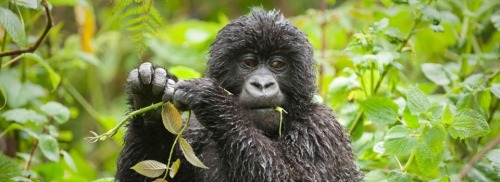Interview with Mike Bowman
Introduction:
I’m Mike! Professionally, I’m a digital marketer and web developer. My home base is in San Diego, but since my work is almost entirely online, I can work remotely from pretty much anywhere in the world. If I have a WiFi connection, I can support myself. This allows me to be pretty much anywhere I want, so I’m free to travel practically at-will. It’s very, very cool. I was born in Los Angeles and didn’t travel much until I was an adult. I love mountain biking, hiking, backpacking, camping, jiu jitsu, other action sports, brewing my own beer, writing, and dabbling in photography (who doesn’t these days, right?). I stop to pet almost every dog I come across, and I once got way too drunk in Mexico. That story is not going to be reprinted here though.
1. What’s your website, and why did you start it?
I actually don’t have a travel “website” right now, though it’s in the works. I’ll let you know when I do! I have volunteered and worked with lots of other travelers around the world, though, so you might have seen me on some other peoples’ sites around the web…
2. Can you recall a specific moment that sparked the “traveling bug” in you?
When I was a kid, we used to go on big summer road trips across the United States every summer. We’d pack up our Jeep Cherokee and just hit the road for a few weeks. We must’ve hit every state in the contiguous United States. We never made it to Alaska or Hawaii, and as a kid I never even made it to Canada. I was very well-traveled in my own country but never visited any other country, except for the one time my family went to Tijuana, which I hardly remember. In college I attended school in San Diego, so all of a sudden I was visiting Mexico a lot. And midway through my college career, I went on an 8 week archaeological excavation in Jordan. This kickstarted my travel bug, I think, more than anything else. While I was out there I went to Israel and Egypt as well. Within a few years of returning home, I visited Canada, Ireland and Great Britain, Peru, Costa Rica, Australia, and China.
3. What is your dream trip/destination and why?
My dream destination is definitely Botswana. I know some people at this great sustainable, ethical tour company in Solana Beach called Aardvark Safaris - they offer some awesome Botswana Safari packages and since they’re so close to me and I know them, I think I can make that dream a reality pretty soon. Botswana is cool because it has the most wildlife and wildlife tours of any African country, and it is booming in popularity now but for so long was considered a sort of a “poor-man’s Kenya” or “South Africa” that it hasn’t been over commercialized. There’s still a pristine-ness there that’s really appealing to me. It’s growing in popularity, but it isn’t over crowded yet, and it still feels sort of wild. There’s also the Okavango Delta, Victoria Falls, a ton of UNESCO sites, and the birthplace of modern homo sapiens… what’s not to love?
4. What does “traveling” mean to you?
Traveling means expanding horizons, which is cliche I know, but that’s what it means to me at its heart. That’s the “personal” aspect of it for me. But on a broader level, travel is a really interesting phenomenon because the concept of world travel is so common now. Traveling the world is something attainable for almost anyone, because as a global community, we have embraced the necessary technology and the intercultural climate to facilitate people moving very rapidly between vastly different societies. So “traveling” for me now includes a whole lot of Responsibility. See we’ve moved past “exploration” and into “global consciousness”. Since we are a global community, and growing more so every day, we almost have an obligation to understand other cultures, other politics, other lifeways. And the best and most fun way to do that is to actually travel to those places and open a dialogue with the people who live there. Don’t sit in the resort. Get out into the street. Mingle with people. We’re citizens of the same global society now, someone in China might as well be your neighbor, so we’ve got to know them and support them where we can.
5. How are you “creating change,” through your traveling or otherwise?
These days I travel as much as I can, and wherever I go I try to spend at least some of my time volunteering. I worked for my stay on a rainforest preserve eco-lodge in Costa Rica, and have gone on multiple archaeological ‘trips’ that allowed me to explore a country while also participating in the expansion and development of that country’s culture (also, dig sites do wonders for the local economy of impoverished regions). If I can’t volunteer, I try to spend my travel dollars with responsible and sustainable tour operators. You’d be surprised how many tour operators in countries around the world donate a portion of their proceeds to development and conservation initiatives in their home region. You just have to ask around or do some Google-Fu to find them!
6. If any, Which organizations that drive change do you support?
There are a lot of organizations doing a lot of good out there, but I’m big on wildlife and environmental conservation. One such organization that not a lot of people know about is Tusk Trust, based in the UK. They focus primarily on the conservation and rehabilitation of elephants and rhinos, but they also support crucial education initiatives in African countries, as well as community development in the same. Conservation and education go hand in hand, after all.
7. What do you ask (or would you ask, given the opportunity) people to do to support those organizations? How do you help?
Oh, there are a lot of ways people can help Tusk and organizations like it. The easiest and most obvious way to do it, without needing to leave your desk, is to donate online. That’s basic. But Tusk has a lot of events around the world that are well worth attending, where a portion of the event proceeds go to charity. A great example that I especially love, since I love to run, is the Safaricom Marathon. This marathon takes place within the Lewa Conservancy, so while you’re running, you’re aware that you’re basically “in the living room of nature.” So you’ll see rhino and giraffe and gazelle just casually hanging out, yards away from the trail you’re running on. It’s pretty intense, to be so close and so vulnerable, but to be participating in such an amazing event. The marathon itself directly benefits Tusk and the Lewa Conservancy, donating money to development and conservation initiatives. The Safaricom Marathon does a lot to combat poaching, which is one of the biggest threats facing these animals now.
Interview with Drew Binsky
1. What’s Your Website, and Why Did You Start It?
I started The Hungry Partier in 2013, within days of moving to Seoul, South Korea, for a job teaching English. I already knew that I wanted to blog about my travels, and I of course already knew that I wanted to travel! I am all about having fun, and this blog was a way for me to experience the world, have a lot of fun, and share my adventures with my friends, family, and the rest of the world. In fairly short time, I realized I could monetize it and actually make some money with the blog… even better!
2. Can you Recall a Specific Moment that Sparked the “Travel Bug” in You?
Oh yeah. I definitely got the travel bug for the first time when I was studying abroad in Prague,Czech Republic. I went to University of Wisconsin - Madison, where I studied entrepreneurship and economics, and decided to see a little more of the world. Best decision I’ve ever made. I wouldn’t be here doing this today if I hadn’t gone to Prague! While I was there, I managed to travel across 20 European countries and backpacked around the continent for a few weeks after the semester ended. Somehow, I still managed to get good grades! A great mystery of my life.
3. What is Your Dream Destination, and Why?
My dream trip is to go to Antartica, because penguins are my favorite animal and I want to see them in their natural habitat!
4. What does “traveling” mean to you?
Traveling means meeting new people, eating new foods and immersing myself into new cultures. My ultimate favorite part about travel is interacting with people, who don’t even speak my native language of English! I’ve learned that almost every human being has the same needs – we all need to eat, have shelter to sleep, need to feel loved, and be close to our families. Contrary to popular belief, money and wealth doesn’t always lead to happiness.
5. How are you “creating change,” through your traveling or otherwise?
I am trying to be a role model for millennial travelers, or 16-30 year old aspiring travelers. I want to be there to help them get started. I want to give them good advice. I want to be resource to answer all of their travel questions. These are some of the way in which I stand out from the crowd.
6. If any, Which organizations that drive change do you support?
I like “The Water Project” which brings clean water to villages in Africa. Are you aware that over 1 billion people suffer without access to clean water in the world?
7. What do you ask (or would you ask, given the opportunity) people to do to support those organizations? How do you help?
I would ask people to physically go to African and volunteer. When you go there, you can see everything with your own eyes, feel the need of the people, and try to solve the issue.
The World’s 5 Best Conservation Safaris
In light of so many wonders of the world vanishing before our very eyes, it is now more crucial than ever that we practice responsible tourism and try to conserve the wilderness and wildlife we so eagerly travel to witness.

And if you do like traveling, be advised, you DO have a responsibility. Because we are all indebted to this world, and we all are obligated to do our best to take care of it. You may not always realize it, but traveling - while economically positive for the regions you visit - can and does have a carbon footprint, and sometimes, a conservation footprint, that we must be aware of. And we must try to offset those negative impacts as much as we can if we wish to preserve these amazing experiences not just for ourselves and our children, but for our children’s children. Luckily, a little bit of help now can go a long way, and you don’t necessarily need to stray from your relaxing, fun, and fast-paced itinerary to help do a little good on your next vacation.
See, lots of people want to travel and help conserve and protect our natural environment, but not all of us want to commit to a full volunteer trip - we want to feel like we’re on “vacation,” but still doing some good, and supporting a good cause. So how do we accomplish that? Well, here are just a few ideas to get you started. Have fun on your holiday, be mindful, and rest easy knowing your fun-filled travels also helped make the world a better, more vibrant and verdant place.
1.) Save the Elephants While Touring Africa on Horseback
A horseback safari is a must-do bucket list item for many, and for good reason! Few experiences in this world match the sheer exhilaration of galloping alongside giraffe, elephants, gazelle, buffalo, and more across a wide and majestic savannah. Getting close to mighty elephants has never been so personal and awe-inspiring.Sounds cool right? Well luckily, you can go on a horseback safari and get up close and personal with the world’s largest land mammals, and help protect them from poachers at the same time! One way is to sign up with an official horseback riding event, like this one from last year (these sorts of things go on all the time, so Google it!): http://writinghorseback.com/2015/03/save-an-elephant-journey-to-africa/

But you don’t have to wait for an event to get out there and ride along the elephants your tourism dollars are helping to protect. You can book a tour with any responsible operators who donate proceeds to conservation charities, like this one that comes highly recommended.
Here is a list of some of the most ethical tour operators in Africa, get in touch with them and set up your sustainable safari today: http://www.cannedlion.org/ethical-tour-operators.html
2.) Sail the Great Bear Rainforest
There’s a rainforest in Canada? Canada? Yup, and a huge one too, just brimming with wildlife. Stretching from northern Vancouver Island all the way to the Alaskan border, this is one of the world’s largest and most pristine rainforests, containing merely a fraction of a percentage of Vancouver’s human population. It is also home to bald eagle, salmon, and the incredibly elusive and mysterious white bear that roams the spruce-filled forests.

But as with much of the natural wilderness in this part of the world, the Great Bear Rainforest is now threatened by a possible oil pipeline that will cut right through the territory - one spill, and this wilderness could be severely impacted. If enough tourism dollars stimulate the economy of the region, they can better fight the pipeline.
So how do you get those tourism dollars into the Great Bear Rainforest? Try one of the awesome adventures available via Maple Leaf Adventures. We recommend sailing and camping along the coast to really take in all the best sights!
3.) Help protect Gorillas with a trek from a low-impact camp
Seeing gorillas in their natural mountain habitat has been on many an adventurer’s bucket list since “Gorillas in the Mist”came out. And now’s as crucial a time to make the trip as ever: Rwandan and Ugandan gorillas are still at risk and more and more human encroachment and development of their land threatens their existence.
This trip in the Congo costs a good amount of money, but for the experience it is well worth it. over the course of six nights your experienced guides will take you hiking and camping through the wilderness and get you closer than you’ve ever dreamed to these amazing animals.
For more low impact treks, consider working with a reputable gorilla tours safari operator like this one.
4.) Protect Tigers in India with a 19-day trip
This is probably the most expensive trip on this list, but it’s well worth it. Wildland Tours offers this trip in India, tracking and viewing surreal Bengal tigers in their own home - as well as countless other species, such as sloths, swamp deer, and birds - over the course of 19 (!) days.
You won’t be roughing it for the 19 days, however - the tour includes stays at multiple eco-lodges, as well as sightseeing days that bring you to some of the region’s most popular tourist attractions such as the Taj Mahal. A portion of the proceeds will go to tiger conservation efforts in India.
5.) Visit Denali and Get Your Carbon Footprint 100% Offset with Natural Habitat Adventures
Sort of like the Great Bear Rainforest mentioned above, Denali National Park is an amazingly large and diverse wilderness filled with incredible animals - some of whom are vulnerable or threatened by human development and climate change.You can climb glaciers, kayak rivers, and hike in the realm of wolves, moose, and grizzlies over the course of a 90 mile excursion. Oh, and NatHab will 100% carbon-offset your trip. Amazing!
… And if that’s not cool enough for you, the same company also offers a similarly epic excursion to see polar bears.
Want more? Here’s a great list of 15 more conservation trips, with a more volunteer-oriented angle for all you traveling super do-gooders out there (we salute you!):
http://travel.cnn.com/explorations/life/animal-adventures-319825/
Like this post? Have more suggestions for sustainable safaris? Comment below and be sure to Like and Share this post!
